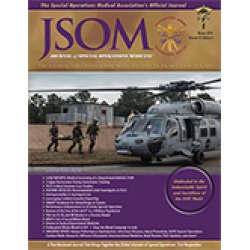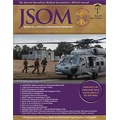Pharmacokinetics of Tranexamic Acid via Intravenous, Intraosseous, and Intramuscular Routes in a Porcine (Sus scrofa) Hemorrhagic Shock Model
DeSoucy ES, Davidson AJ, Hoareau GL, Simon MA, Tibbits EM, Ferencz SE, Grayson JK, Galante JM 19(4). 80 - 84 (Journal Article)
Background: Intravenous (IV) tranexamic acid (TXA) is an adjunct for resuscitation in hemorrhagic shock; however, IV access in these patients may be difficult or impossible. Intraosseous (IO) or intramuscular (IM) administration could be quickly performed with minimal training. We investigated the pharmacokinetics of TXA via IV, IO, and IM routes in a swine model of controlled hemorrhagic shock. Methods: Fifteen swine were anesthetized and bled of 35% of their blood volume before randomization to a single 1g/10mL dose of IV, IO, or IM TXA. Serial serum samples were obtained after TXA administration. These were analyzed with high-pressure liquid chromatography-mass spectrometry to determine drug concentration at each time point and define the pharmacokinetics of each route. Results: There were no significant differences in baseline hemodynamics or blood loss between the groups. Peak concentration (Cmax) was significantly higher in IV and IO routes compared with IM (p = .005); however, the half-life of TXA was similar across all routes (p = .275). Conclusion: TXA administration via IO and IM routes during hemorrhagic shock achieves serum concentrations necessary for inhibition of fibrinolysis and may be practical alternatives when IV access is not available.


 Español
Español 




